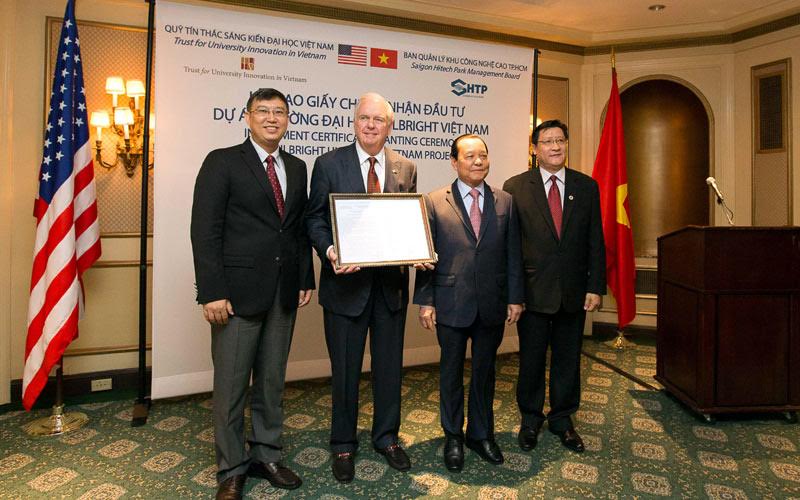Fulbright University to offer US teaching in Vietnam
 |
Deputy Prime Minister Vu Duc Dam last week signed a decision to establish the university (FUV) based in the Ho Chi Minh City’s Hi-tech Park. The establishment received support from the US and Vietnam governments, scholars and people who hoped that FUV would help improve the quality of the Vietnamese education sector.
“We don’t want FUV to be a foreign-invested project which will adopt an all-US curriculum and teaching staff. FUV stands out from FDI-modelled schools in that it receives funding from the two governments, as well as financial support from US and Vietnamese enterprises and individuals,” Dam Bich Thuy, FUV President-designate, told local press.
According to the plan, in the first five years, FUV will focus on building three integrated training facilities: the Fulbright School of Management and Public Policy, Fulbright School of Engineering and Applied Science and Fulbright University.
As planned, Public Policy training will start right after the establishment of FUV, while other training programmes will open in 2017.
FUV sets an example for education co-operation between the US and Vietnam.
In the Joint Declaration of State President Truong Tan Sang and US President Barack Obama in July 2013, the two leaders acknowledged the efforts to promote bilateral education co-operation through the FUV initiative.
Following the joint document, in June 2014, Prime Minister Nguyen Tan Dung agreed in principle to the FUV project. And five months later, the US Congress agreed to finance about $20 million for the FUV project in the first phase.
In July 2015 in New York, when Vietnam Party General Secretary Nguyen Phu Trong visited Washington D.C., FUV got an investment license from Ho Chi Minh City to build the school in the local high-tech park.
Education co-operation, including the construction of FUV, is expected to be one of the key issues in US President Barack Obama’s visit to Vietnam during May 23-25.
Vietnam is one of the countries sending a high number of students to the US. Vietnam now ranks first among the ASEAN countries sending students to the US with around 17,000 students studying in the country.
What the stars mean:
★ Poor ★ ★ Promising ★★★ Good ★★★★ Very good ★★★★★ Exceptional
Latest News
More News
- Mitsubishi Estate launches Logicross Hai Phong - a milestone in logistics evolution (November 20, 2024 | 14:32)
- Semiconductor workforce partnerships deliver industry-relevant training (November 20, 2024 | 10:58)
- German Quickpack to invest $31.7 million in Long An province (November 20, 2024 | 09:31)
- Foreign-invested enterprises drive logistics investment in the southeast region (November 20, 2024 | 09:27)
- Chile visit underscores trade benefits (November 19, 2024 | 10:00)
- Trump’s second term impacts sci-tech activities and industry 4.0 technologies (November 18, 2024 | 10:00)
- Vietnam eyes nuclear revival to bolster energy security (November 14, 2024 | 16:46)
- Kyokuyo completes $13.5 million seafood factory in Vietnam (November 14, 2024 | 12:19)
- VinFast receives $3.5 billion funding from Vingroup and Pham Nhat Vuong (November 14, 2024 | 06:38)
- Localities sprint to reach FDI targets (November 13, 2024 | 10:00)


















 Mobile Version
Mobile Version